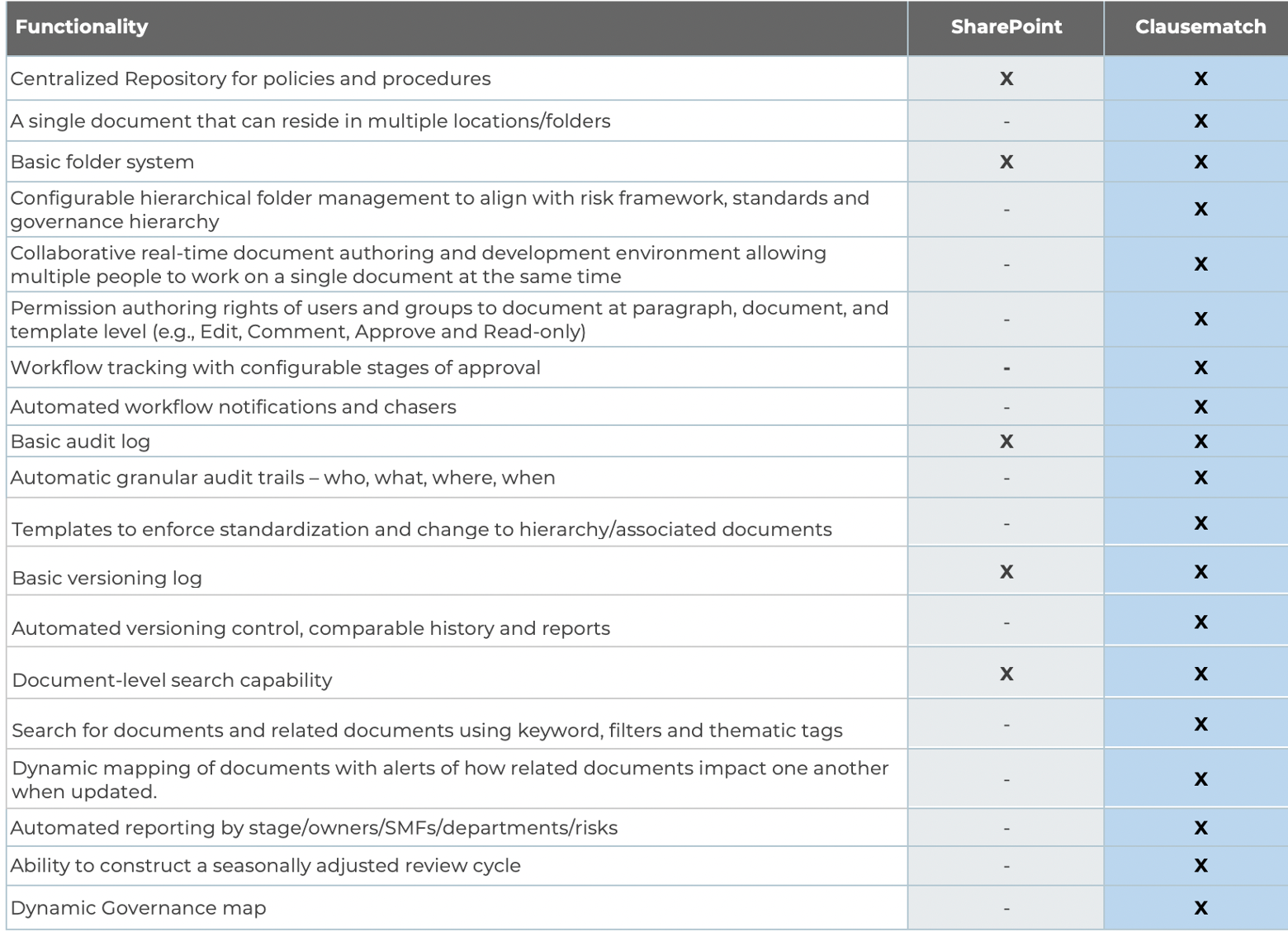With the influx of new regulation and the disruption — and interconnected risks — brought about by Covid-19, Regulatory Technology (RegTech) investment has risen to the top of regulated firms' agendas. While many organizations are now allocating compliance teams' budgets for RegTech software, some organizations are still hesitant about pouring money and effort into technology that they don't quite understand. So how can you get approval from your executive team to adapt this new technology? We outlined 5 ways to convince your executive team to purchase RegTech. Check out our new eBook to learn more.
1. Open Channels of Communication
It's likely your executive team is not fully aware of the compliance team’s top priorities and what challenges your team is currently facing. They may be more supportive to your team's need to adapt RegTech if they understand the reasoning behind it. Start by setting up an informal call where you can be transparent to senior leadership about the current compliance situation and what roadblocks stand in your way. Allow them to digest the information you relay and give them the opportunity to ask questions and voice concerns. It’s important to make sure it’s a two-way conversation. You don't just want to complain about the current situation - allow them to jump in and ask questions.
To make sure the meeting is effective, follow these best practices:
- Share the current situation - Explain what business problem you’re trying to solve and why you need to solve this problem now
- Share what you hope the desired outcome to be
- Explain why it’s important to change technology now, including regulatory drivers, operational efficiency drivers and transformation drivers
2. Show the Return on Investment (ROI) of RegTech
Let's face it - it's hard to prove the value of a product, and therefore get executive buy-in, if you can't show the return of investment from the technology. If your executive team is worried about costs, provide them with examples of the value your organization will receive after implementing the new software. Work with the prospective vendor to provide benchmarked benefits of using their software vs. your current solution for managing compliance. It’s important to partner with an expert in the RegTech space who understands your specific needs and challenges. Remember, they’ve done this more times than you.
Example of benefits to share:
- Reduce the time it takes to refresh documentation by X%
- Lower policy management costs by X%
- Standardize X% of documents
- Reduce document approval time by X%
- Reduce average time needed to update a document by X%

3. Explain the Effectiveness of the New Functionality
Don't expect your executive team to fully grasp the out-of-the-box functionality that a RegTech software provides in comparison to a legacy or current system your organization is using. Provide a visual table or chart, like the one below, to show a direct comparison and allow your team to grasp how effective this new technology will be in achieving your goals.

4. Be Prepared to Share the Cost Breakdown
When it comes to SaaS technology, it’s not always a one size fits all approach. Be prepared to provide your executive team with the costs associated with the platform. This will prove to your executive team that you did your homework, and you’re aware of all the costs (whether monetary or time-savings).
Often, organizations are conflicted with whether to build an in-house product vs. purchase existing software. While it may seem more cost effective to build a platform in-house, remember it’s more costly to maintain and update a platform over time. Your developers are more likely to leave your organization than a vendor is. Additionally, you’ll want to consider whether your software is future proofed. Will your regulator be satisfied with the software you choose five or ten years from now?
Cost Breakdown:
Implementation costs
- Will you be responsible for implementing the software yourself?
- Will you hire a third-party firm to implement the software for your organization?
Integration costs
- Will you integrate the software with another solution such as a HRIS?
- If so, are there any financial costs associated with the integration?
Annual licensing costs
- Is there a reduction in cost if you purchase an annual license vs. a month-by-month license?
- Will the cost be reduced if you commit to a three-year agreement?
5. Share Customer Success Stories
Sure, a Sales rep can demo the software and promise you that it will achieve all your organizational goals. However, if you need to prove the effectiveness of your product, don't be shy about asking for client references. Speak to the individuals that use the platform on a regular basis and ask them about their experience using the platform. Ask questions like, "Has the platform been effective in achieving your goals? Would you recommend this platform to a friend?" If you gather positive feedback from client referrals, you will build more credibility with your executive team and ease their reluctance about purchasing the software.
These are just some of the ways you can convince your executive team to purchase a RegTech solution for your organization. For more information, check out our latest eBook: 8 Reasons to Invest in a Policy Management Platform Today or contact Clausematch today.


